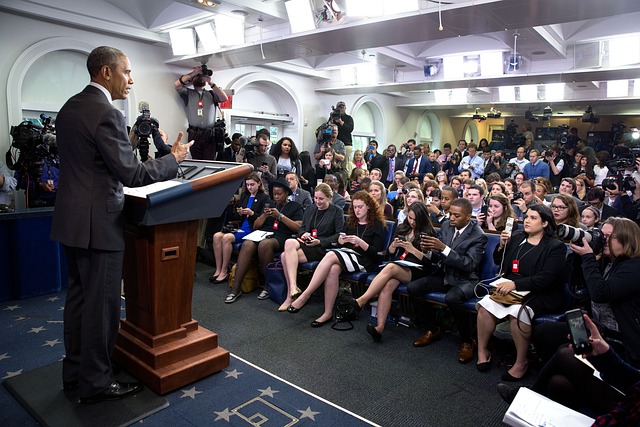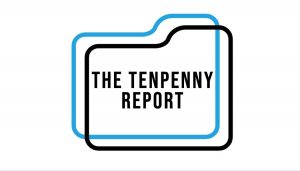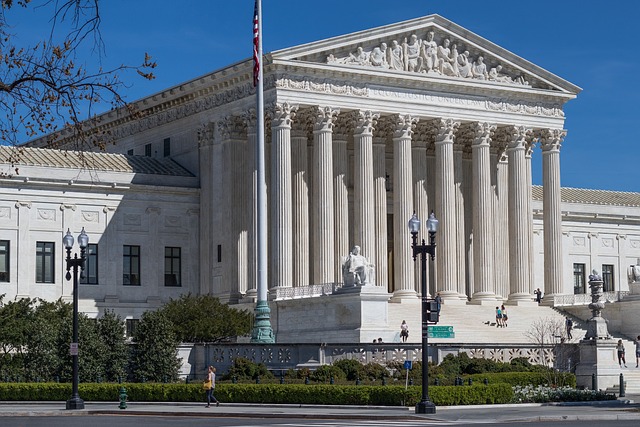Very few people had probably ever heard of the Chevron doctrine before the Supreme Court’s landmark decision on July 1 to overturn the 40+-year-old ruling. In a nutshell, in one fell swoop, SCOTUS has restored the constitutionally-mandated separation of powers and has ended the unelected bureaucrats’ ability to govern We the People. It’s tremendous. This. Is. Huge.
Background
Under the current system, judges ‘rule’ on current statutes but what if that judge’s ruling is ambiguous or unclear? You’d think the court would clarify, but no, that is not how things have been done in the last 40 years. Enter Chevron deference: in 1984, SCOTUS ruled that federal agencies could make reasonable interpretations of a judge’s “unclear” statute, and that the agency’s interpretation would take precedence even if the judge had a different opinion.
The landmark case, Loper Bright Enterprises vs. Raimondo, Secretary of Commerce, challenges yet another obscure federal agency, the National Marine Fisheries Service and its interpretation of the Federal Magnuson-Stevens Act. This act requires commercial fishermen to pay steep daily fees to government compliance monitors who ride along on the fishing boat. The initial federal law never said who should pay, but the agency interpreted the law, making the fishermen pay on average $700 per day for these government ‘yahoos’ to monitor their ‘wahoos’ (fishermen will get this inside joke.)
In the Loper case, SCOTUS agreed with the two New England fishing companies who challenged the government on these fees. By overturning Chevron, SCOTUS returns to the 1946 Administrative Procedure Act (APA) that basically says “statutory interpretation is fundamentally a judicial responsibility.” The courts can certainly consider agency expertise, but agencies no longer have the final say. Legal cases already settled will not be reheard, but new legal challenges are now certain to surface from this point forward.
Did SCOTUS know the massive Pandora’s box they were opening? Yes, they did. Prior to Chevron, the Skidmore deference ruling gave a nod to agency expertise and said these agencies could administer statutes. But the 1984 Chevron ruling gave it teeth. Fast forward 40 years, and the federal government has literally run amok. Chevron paved the way for so many agencies to gain power which is exactly what they have done. They have gone to great lengths to create more ‘laws’ than Congress. Based on this recent SCOTUS decision, those days are over.
Did you know that we don’t even have a definitive list of government agencies? That’s problematic, to say the least. Several official registers have attempted to determine this number; the Federal Register indicates as of 2016 there are over 440 departments, agencies, and sub-agencies in the federal government. That probably doesn’t include all of the new agencies that the Biden regime has created.
If Americans only knew…
- We pay $800 million per year for a 12,000-person Natural Resource Conservation Service originally created to help farmers minimize soil erosion.
- What about the Rural Electrification Administration, created in 1935 to provide rural electricity and expanded in 1949 for telephone service. I’m pretty sure that everyone who wants electricity and phone coverage has it. Getting rid of the REA would save $1.8 billion over five years.
The Heritage Foundation’s list of useless government agencies is worth a read. Needless to say, we likely don’t need most of them. Is the Chevron ruling the culmination of President Trump’s Drain The Swamp agenda? Yes, I believe it is. Trump would need the Chevron ruling to finish draining the swamp once back in office. Trump has likely had Chevron in his sites for a while. In 2017, when Neil Gorsuch was nominated to the court, a few savvy journalists did mention that Gorsuch would likely be in favor of a Chevron doctrine overturn. Trump issued Executive Order 13771, whereby agencies had to repeal two regulations for every new regulation they created. The establishment really screamed about that one.
What would Chevron mean for healthcare and health-related issues? In short, what does Chevron do to Health and Human Services (HHS)?Keep in mind that HHS regulates nearly everything affiliated with our health: drug prices, health insurance, hospital payment rates, nursing home standards, and more. Perhaps no other agency has had so much power under the Chevron ruling than HHS. Many of the healthcare-related laws are left vague, likely on purpose. After all, the Affordable Care Act (Obamacare), the Health Insurance Portability and Accountability Act (HIPAA), and both the CMS (Medicare and Medicaid) and the FDA all fall under HHS jurisdiction.
HHS: From Off the Chain To a Tight Leash
The SCOTUS Chevron decision puts HHS on a tight leash. HHS will likely see many legal challenges to its complex policy and “scientific” decisions. The agency’s wings have been clipped and they will be much more cautious in issuing their edicts without Chevron to protect them. In fact, lawsuits have already been filed, like this one challenging Medicare reimbursement for low-income patients. Because there is ambiguity in all of these statutes, litigation is much more likely.
CMS sets drug prices, and we certainly know by now that Big Pharma is pulling those strings. CMS is left totally vulnerable without Chevron, and we can expect a bow wave of challenges to drug pricing. Cases that are already pending in court will surely cite the Loper case. Two examples are the current litigation challenging CMS’s rule for minimum staffing for nursing homes, or HHS’s recent creation of regulations for rural emergency hospitals.

FDA
FDA approves the drugs that CMS sets prices for. FDA also approves vaccines, and given the incredible situation around the emergency use authorization (EUA) of the COVID jabs, FDA decisions will definitely be challenged going forward because it allows the federal courts to challenge FDA calls. On the chopping block may be the FDA’s final rule on Laboratory Developed Tests (LDTs). Incredibly, the FDA raised concerns over ineffective COVID-19 tests, using that to gain even more regulatory oversight over all LDTs. FDA now defines an LDT as anything used in disease diagnosis, including reagents and anything used in the “collection, preparation, and examination of specimens.” Under this rule, labs will have a far more time consuming and costly FDA approval process. That is, until Chevron happened. Main critic, Senator (and medical doctor ) Bill Cassidy (R-La) has already written to the FDA commissioner asking how they will revise the final rule to account for Chevron.
Legal cases already settled will not be reheard, but you can be certain that new legal challenges are certain to surface. This is not good news for the FDA, considering that Chevron has been used in many, many cases to uphold FDA interpretations of ambiguous judge rulings. One example is that the FDA interpreted the meaning of “protein” and “biological product” under the Public Health Service Act (PHSA), allowing the agency to regulate substances like insulin and Human Growth Hormone (HGH). Ambiguous language in the Federal Food, Drug, and Cosmetic Act (FD&C Act) led the FDA to grant exclusivities for new drugs with active ingredients that have not been approved in another FDA New Drug Application (NDA). It also gave FDA regulatory powers over both generic drugs and orphan drugs (used to treat rare conditions). FDA now drives the circumstances under which tentative generic drug approvals are made. FDA also drives the review process for generally recognized as safe (GRAS) food additives as well as current good manufacturing practices for dietary supplements. That’s a lot of power.
Obamacare
Affordable Care Act (ACA), actions that could threaten to stymie not only the Biden administration but future ones. Under the ACA, healthcare institutions that receive federal funding cannot discriminate based on gender identity (Section 1557). The result is that these institutions are absurdly giving men obstetric care, treatments for menstrual issues, mammograms and other insane things. Obama enacted it, Trump reversed it, and Biden reinstated it. Now, SCOTUS has opened the door for this kind of insanity to be dealt with once and for all; they’re hearing the gender case early next year. The Biden rule is already in federal court and that alone represents the power shift away from the federal agencies and back to the courts.

The wide sweeping abortion rulings made by Biden’s HHS will be challenged; specifically the federal government’s ability to mandate abortion services in states that have an abortion ban will come under fire. Look for news of the Emergency Medical Treatment and Active Labor Act (EMTALA) in the near future. HIPAA is designed to protect healthcare records privacy, but it is generic, so HHS use of HIPAA to protect abortion records from law enforcement will likely be challenged because the statute doesn’t call for protecting certain types of records.
Not only does Chevron challenge current agency-directed statutes, it also provides less ability for HHS and other agencies to generate new requirements or create new programs. That’s a good thing.
The Chevron ruling is the removal of the keystone of the federal agencies, and without the keystone, the federal agencies will fall. Trump vowed to end Obamacare, and he is a big proponent of slashing regulations. One thing is for sure – Chevron puts an end to the endless reinterpretation every time a new president is in the White House. The left is screaming about it, like Norman below, who Instapundit (in his substack) calls a predictable voice of the ruling class. It’s more Russia, Russia, Russia, but in reality, the ruling returns us to the constitutional guidance that was intended for our country. Besides, he says Chevron was dying a slow death anyway, and the SCOTUS ruling simply served as the proverbial final nail in the coffin.
Did Trump always have Chevron in his sites? Yes. Recall that he appointed over 200 federal judges, many of those as federal appeals court judges. In fact, Trump appointed more judges in four years as Obama appointed in eight. So yes, Trump knew. And by doing so, Trump reshaped the judiciary for decades to come, and when he returns to office, we’re all about to see the fruits of those labors as many federal agencies go down in a blaze of glory as he continues to drain the swamp.
++++++++++++++++++++++++++++++++++++++++++++++++++++++++++++++++++
 Like what you’re reading on The Tenpenny Report?
Like what you’re reading on The Tenpenny Report?
Share this article with your friends. Help us grow.
Get more of Dr. Tenpenny’s voice of reason at her website.
Join our list here
Make a donation here (and thank you!)
++++++++++++++++++++++++++++++++++++++++++++++++++++++++++++++++++

Fed Up Texas Chick is a contributing writer for The Tenpenny Report. She’s a rocket scientist turned writer, having worked in the space program for many years. She is a seasoned medical writer and researcher who is fighting for medical freedom for all of us through her work.

